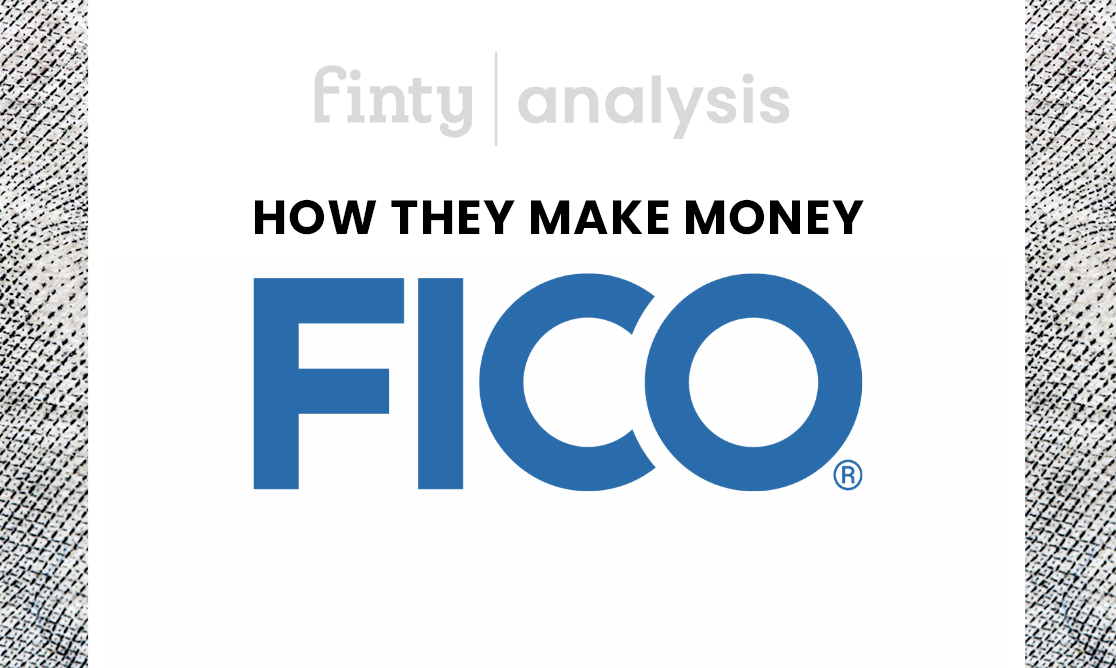- FICO is the leading credit score provider in the US market, trusted by banks and other financial institutions.
- FICO offers credit scores and reports to financial institutions like banks.
- FICO makes money by charging its institutional clients a fee for accessing its services.
Earl Isaac and Bill Fair founded Fair, Isaac, and Co. (FICO) in 1956. The duo met while studying at Stanford, where Fair studied engineering and Isaac mathematics. They started the company with an $800 loan.
Your FICO score is the three-digit number on your credit report that lenders use to assess your creditworthiness. A FICO score between 670 to 739 is a good average score. Scoring under this number means you’re a risk, and scores over this number mean you’re a priority client for the lender.

Coming up next
What does FICO do?
The Fair Isaac Co. (FICO) operates a scoring model assessing consumer creditworthiness by examining past credit behavior. FICO calculates the credit score of every eligible American, feeding that data to its network of institutional partners. FICO enjoys a 90% market share, dominating the industry.
When financial institutions assess you for a loan or any credit facility, they’ll look at your FICO score. FICO also offers consumer services, allowing you to check your FICO score through its “Get your FICO® Score” facility.
You can also download a copy of your credit report and purchase services like “Lost Wallet Protection” and “Identity Theft Detection.”
How does FICO work?
The Fair Isaac Corporation collects data from institutional partners on every American accessing credit services. Whether you’re buying a car, applying for a credit card, or taking a short-term loan, the lender will pull up your FICO score and credit report. They use it to assess your eligibility for its services.
FICO will collect any information about your payment habits. You get a good FICO score if you pay your bills on time. If you default or pay late, it adversely affects your FICO score.
Some categories affecting your FICO score include how much credit you have outstanding, your payment history, credit mix, and your credit history.
How FICO makes money
FICO makes money by charging institutional clients for access to its credit reporting system, charging consumers for the ability to access their FICO score and credit report, and from a range of services involving identity protection sold to consumers.
Let’s take a look at the FICO business model in detail.
FICO Institutional Services
FICO scores determine 65% of all credit-card application decisions with financial institutions. It’s the leading credit reporting agency, trusted by all three credit bureaus, Equifax, Transunion, and Equestrian.
FICO serves the top-100 US credit-card issuers, and 95 of the top 100 US financial institutions are its clients. FICO also works with over 600 international insurers and over 400 retailers.
FICO Consumer Services
FICO charges for downloading credit reports and accessing FICO scores on the consumer side. The company also makes money by offering identity theft and fraud protection services.
FICO Analytic Cloud and Decision Management Suite
FICO launched this platform in 2015, and the technology underlies approximately 65% of all credit card application decisions with institutional lenders.
The service also provides businesses with a complete suite of tools for assessing customer credit, improving cybersecurity, eliminating fraud, and maintaining regulatory compliance.
DMS
The DMS side of the business is FICOs fastest-growing segment of its model. Revenues increased at an average of 35% rate year-on-year.
FICO plans to integrate its DMS services with Equifax data to improve anti-money laundering procedures and know-your-client (KYC) protocols.
Future growth engine
FICO saw its revenues reach the $1 billion mark for the first time in 2018. The company continues to grow, and it has several projects in the pipeline with leading institutional partners. FICO has three products in development with credit bureau Equifax.
Currently, FICO sees growth in the consumer-facing side of its business, experiencing growth of around 8% annually. However, the B2B side of its business is its growth engine, experiencing annual growth averaging 36%, thanks to more companies completing digital transformations.
Competitors
FICO has competition in the credit reporting market. However, it has a 90% market share, and it remains the leading credit scoring system trusted by institutions. Some of its top competitors include the following companies.
- VantageScore 3.0
- Equifax
- Experian
- NICE
- Veritone
- Credit Karma

